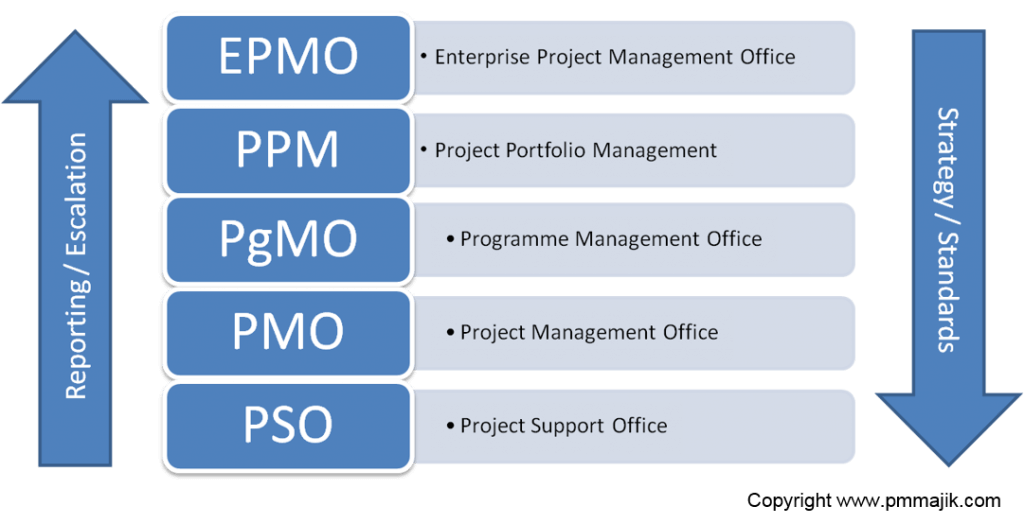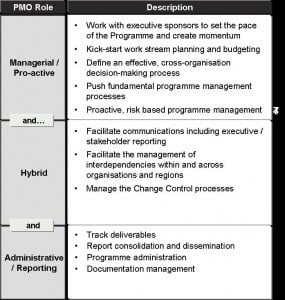The term Project Management Office (PMO), is a term often used in the change management space. Many professionals have their own understanding of what this term means.
However, just like everyone understands what is meant by the term “car”, there are many types of car. The same applies to the term PMO, there are many types of PMO.
This post is going to draw on previous articles on the blog to give a good idea of the different types, flavours of PMO. It is helpful to have this understanding as it will help you make informed choices when designing, building and enhancing your own PMO.
PMO Capability
While the PMO can take many forms, the approach I have taken at pmmajik.com is that a PMO falls into one of the following broad categories based on purpose and capability:
These categories represent the different steps on the PMO maturity journey (the PMO functions they support). Therefore, an Administrative PMO will normally be staffed with more junior / less experienced resources where as a Managerial PMO will typically have very senior resources who have direct management of the change resources.
PMO Responsibility
In order to describe a PMO, an organisation may use different names (with their associated acronyms). The different names are usually to describe the responsibility / span of control of the PMO.
Common examples are:
- PSO – Project support office
- PMO – project management office
- PgMO – Programme management office
- PPMO – Project portfolio office
- EPMO – Enterprise project management office
The responsibility level increases from PSO (usually local to a specific project) all the way to EPMO (usually spanning the entire organisation).
More details can be found in the article “Different names for a project management office”.
 PMO Size
PMO Size
There is no set rule for the size of a PMO. However, I have come across common planning assumptions that a PMO budget should be approx. 5% of the combined project budget for which the PMO has oversight.
Obviously a level of discretion is required as this will depend on the objectives of the PMO. An Administrative PMO will normally require less budget than a Managerial PMO.
Distributed V Centralised
This is driven by the capability, responsibility and the desired operating model.
- Distributed – this is where there is a small central PMO with the majority a PMO capability located in the actual project teams. This is more typical of an Administrative PMO.
- Centralised – this is where there is a large central PMO performing majority of functions. This is more typical of a Managerial PMO.
Types of PMO
Hopefully you can see that just taking these 4 broad considerations, there are many different types of project management office.
The good news is that there is no right or wrong academic answer. However, there is a right or wrong answer for your organisation. This is why defining the objectives of the PMO and agreeing up front with the sponsor is critical.
You can find out more in the article “Defining the objectives of a PMO to help a sponsor measure success”.
Summary
Understanding these principles will help guide you in defining and implementing the right type of PMO for your organisation.
Types of PMO Presentation







